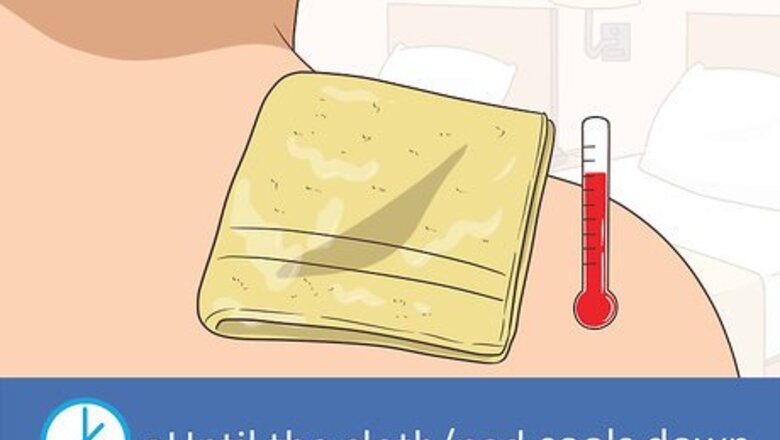
views
X
Trustworthy Source
MedlinePlus
Collection of medical information sourced from the US National Library of Medicine
Go to source
Giving Basic Treatment at Home
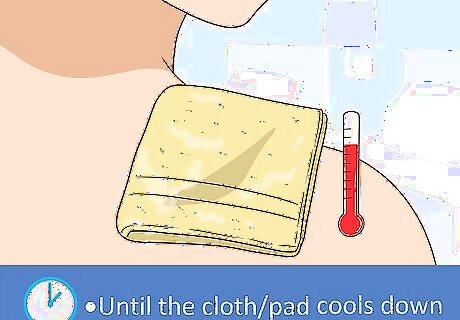
Apply a warm compress. Soak a clean washcloth, cotton pad, or sponge in warm water and apply it directly to the cyst. Keep it on the area until the cloth or pad cools down. Repeat this action several times each day until the cyst goes away. The heat thins out the liquid inside of the cyst, which ultimately causes the cyst to shrink and heal faster. The water should be very warm but not hot enough to cause burns. You should barely feel any discomfort when you touch the water with your bare skin. You can also make a warm compress by placing a wet cloth in a plastic bag and heating it in the microwave for 30 seconds. Test the cloth to make sure it isn’t too hot before you put it on your arm.
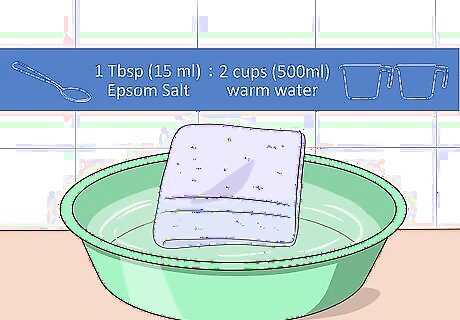
Consider adding Epsom salt to your compress. You can also mix 1 Tbsp (15 ml) of Epsom salt into every 2 cups (500 ml) of warm water used for your compress. The salt can speed up the healing process. However, using too much can also cause your skin to dry out, so you should only apply an Epsom salt compress once or twice a day, or stop entirely if you notice any skin irritation.
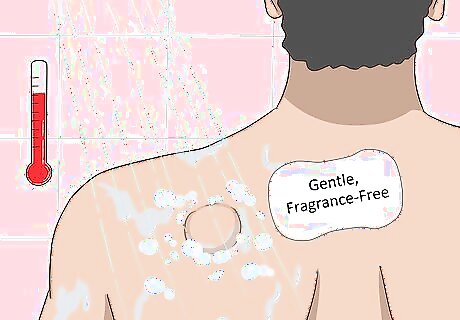
Clean the area with soap and water. Use warm water and a gentle, fragrance-free soap that will not dry out or irritate your skin. It is important to have the area clean, especially if the cyst has opened up and dirt and bacteria can get inside of it. It may be necessary for you to get someone to help you clean the area if it is right in the middle of your back. If you can't get someone to help you, try gently applying the soap with a shower brush and rinsing the area off in the shower.
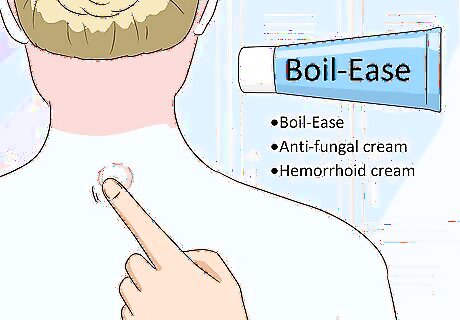
Put topical first aid creams on the cyst. If your cyst continues to be sensitive, you may need to apply products to it to reduce the inflammation. Look for creams that are designed to draw the cyst to the surface, such as Boil-Ease. Some people may also find products such as anti-fungal cream or even hemorrhoid cream helpful. Regardless of which topical cream you try, you should apply a small amount directly over the cyst and cover the area with a clean band-aid. Remove the band-aid the following day and apply additional cream if necessary. Be sure to follow the directions included with your cream. If you have any questions about the application of your cream, talk to your doctor or pharmacist.
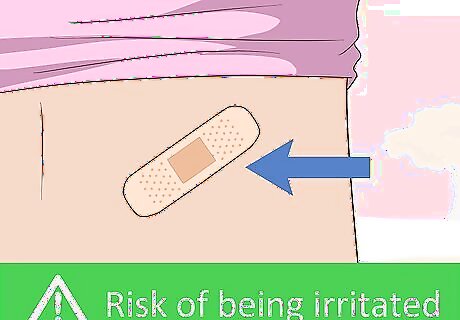
Avoid irritating the area further. If you have a cyst that is painful, it is a good idea to cover it with a band-aid when it is at risk of being irritated from rubbing against your clothes. However, cover it lightly and be sure to take off the band-aid when it is no longer at risk of being bumped or rubbed so that the cyst can breathe. For instance, try wearing a band-aid over the cyst during the day but taking it off when you get home and can have the area exposed to the air.
Getting Medical Treatment
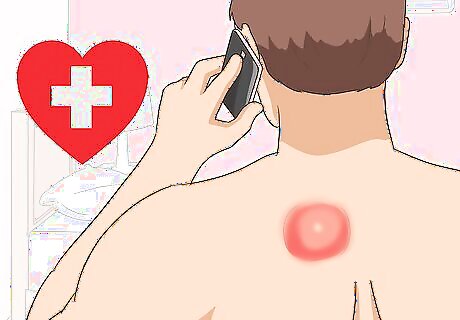
Ask your doctor for treatments that will give immediate relief. If your cyst is severely infected or you need to shrink the cyst on your back quickly, you can schedule an appointment with your primary care doctor or a dermatologist. For a quick and effective treatment, they may make a small incision to drain the cyst. If the cyst is very inflamed, an injection of cortisone or steroids into the cystic area may provide fast relief. Both types of injections should cause the cyst to shrink within hours, and both should also relieve any pain or itching caused by the cyst. However, the use of injections may cause the cyst to heal unpredictably, so you might be left with an indentation or scar after the injection takes effect. This result does not happen to everyone, but it is a definite possibility, so keep the risk in mind when considering this option.
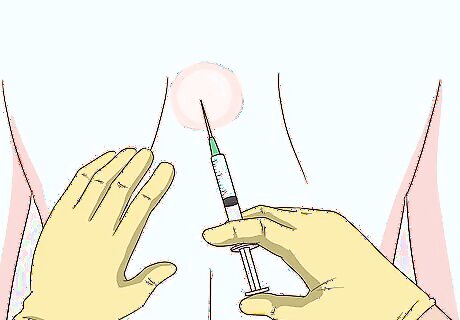
Have your doctor drain the cyst. Depending on size and position of the cyst, your dermatologist may recommend draining it with a needle or a small incision. This is an outpatient procedure that can be done quickly in a doctor's office with some local anesthesia. During the procedure, your doctor will usually numb the area before inserting a needle or small, sharp blade directly into the cyst. The pus and other fluids inside the cyst are then drained through the incision, causing the cyst to collapse in the process. The doctor may apply a little pressure to the area to help the pus and other fluids drain out, and to gently squeeze out the core of hardened pus at the center of the cyst. When done carefully, this procedure does not typically cause any major scarring or pain.
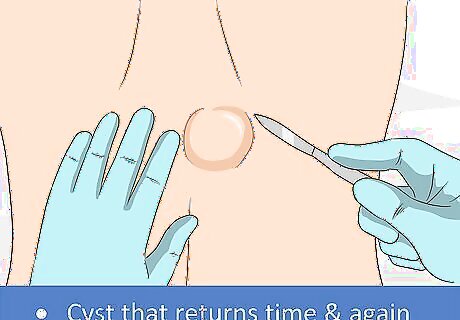
Ask about standard excision surgeries. Surgical removal is usually best when you have a cyst on your back that returns time and time again. Standard excision surgeries are usually relied on for most cyst removals. They can be done with a wide or small excision, depending on your cyst. Conventional wide excision surgery removes the cyst completely, so it is especially worthwhile if the cyst is suspected to be malignant or if it has caused other health problems. Minimal excision surgery uses a smaller excision to extract the cyst, and as a result, the scarring is much lighter and more likely to heal completely. It is not as effective as wide excision surgery, however, so there is some risk that the cyst will still return. Even with minimal excision surgery, the incision must be a little bigger than the cyst and will need to be closed with 1 or 2 sutures. This procedure is likely to leave a small scar.
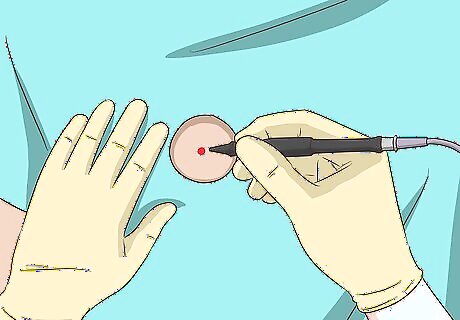
Consider getting laser-enhanced surgery. Depending on your circumstances, your doctor may recommend the use of a laser with a punch biopsy excision. During the procedure, the doctor will use a laser to make a small hole in the cyst. The contents of the cyst are then drained, leaving the outer walls to collapse naturally. Roughly 1 month later, the drained outer walls are surgically cut and removed. This procedure takes longer to heal overall, but it leaves minimal scarring and usually prevents the cyst from returning.
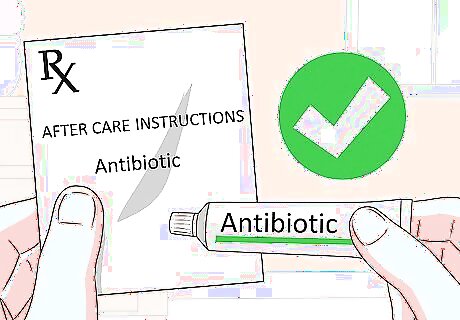
Follow all aftercare instructions carefully. After removing the cyst on your back, your dermatologist should recommend some form of aftercare treatment. This will be designed to minimize scarring and complete the healing process. You'll likely be taking oral antibiotics, so you should use a bland, non-antibiotic ointment on the area where the cyst was removed. This ointment should be applied to the affected area as directed by your doctor, and you should continue using it until the area completely heals. Aftercare treatment is especially important when a cyst is removed surgically. Some dermatologists may also prescribe a scar cream to lighten and minimize possible scarring.
Trying Natural Remedies
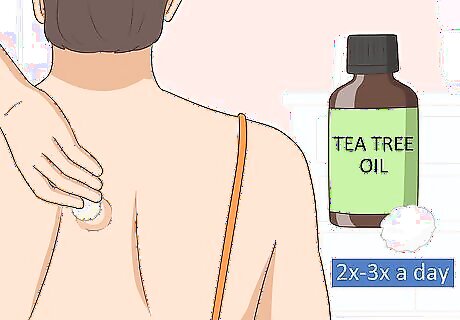
Look into tea tree oil. Soak a sterile cotton ball in tea tree oil and then apply the oil directly to the cyst. Do this 2 to 3 times each day and you may notice the cyst shrinking over time. More research is needed to understand if tea tree oil has any effectiveness to treat cysts, though there is some evidence for related conditions like acne. Stop using tea tree oil immediately if you notice it causing skin irritation. Tea tree oil may have anti-inflammatory and anti-bacterial properties that could help heal some cysts. However, since it cannot penetrate the skin deeply enough to reach the inside of the cyst, it's effectiveness is questionable. If you wanted to try it as a preventative measure, try using a moisturizer with tea tree oil on acne- or cyst-prone skin. If tea tree oil dries your skin, you can dilute it by mixing it with a gentler carrier oil, like olive oil or jojoba oil. Combine 1 part tea tree oil with 9 parts carrier oil and apply the mix directly to the cyst.
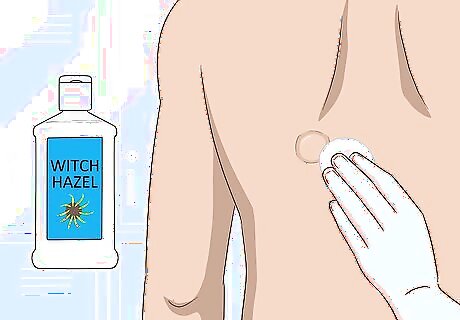
Consider applying witch hazel to the cyst. Use a sterile cotton ball or cotton pad to apply witch hazel gel or cream directly over the cyst on your back. Use just enough witch hazel to completely cover the cyst, and allow it to soak into your skin before cleaning the area. There is not much evidence for witch hazel's effectiveness for cysts, though it may help with related skin conditions, like acne. Witch hazel is an astringent. The tannins witch hazel contains may help remove excess oil from the skin when the product is applied. As the oils dry up and the pores are tightened, this could cause the cyst to shrink. Using too much witch hazel can cause skin irritation, so it is best to use this treatment only once a day. If you notice any irritation stop using witch hazel. If your cyst has a solid core, witch hazel is unlikely to be an effective treatment.
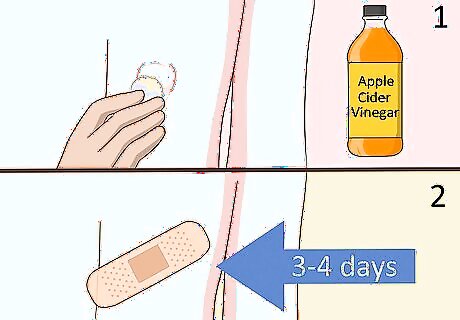
Use apple cider vinegar with caution. Apple cider vinegar is a popular part of many home remedies, but applying it directly to the skin can result in chemical burns, especially for those with sensitive skin. If you do want to try it apply diluted apple cider vinegar to the cyst and cover the area with a clean bandage, cleaning the area each day and reapplying the apple cider vinegar and a new bandage. You may notice the cyst shrinking or dead skin flaking off. Carefully wash the area with soap and water and allow any pus to drain. Once the area is clean, apply a fresh bandage. Apple cider vinegar may help dry excess oils and kill bacteria responsible for an infected cyst, however, it is unknown how effective this treatment might be. Individuals with sensitive skin may not be able to tolerate this treatment. If the area burns or severely itches after you apply the apple cider vinegar, you should clean it off immediately and try another treatment option. Apple cider vinegar is not an effective treatment for severe cysts.
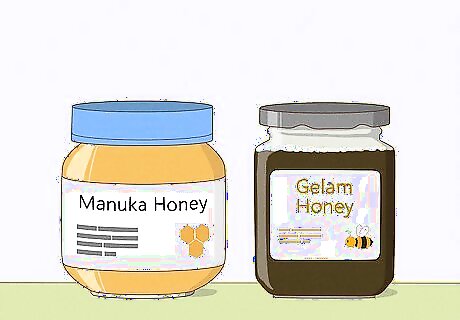
Try honey. Honey has anti-inflammatory and antibacterial properties, and is may help reduce any redness, but is unlikely to completely heal a cyst. The honey treatment is more likely to help when the core of the cyst has already been removed. Honey will not draw out the cyst on its own. After applying the honey, cover the area with a clean bandage and leave it alone overnight. Remove the bandage in the morning and wash the area with mild soap and water. Ask your doctor or dermatologist to prescribe or recommend a pre-made honey-soaked wound dressing. Honey may cause skin irritation or an allergic reaction in some people. If you get hot, your chances of having a bad reaction may increase. Rinse off the honey right away and ask your doctor before using any more if you experience stinging or other side effects.
Preventing Future Cysts
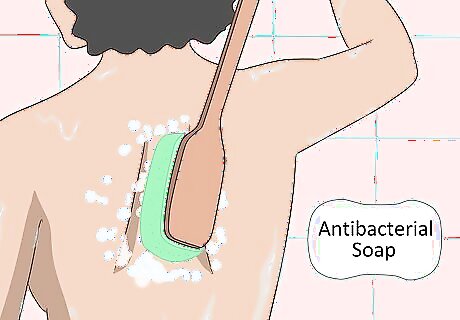
Wash daily with antibacterial soap, especially in hot weather. Cysts often form in areas where sweat, oils and grime accumulate and get trapped against your skin, such as the back and buttocks. If you have a lot of body hair, you might be especially vulnerable to getting cysts on your back. You are also at risk if you are physically active or spend a lot of time in the heat. If you’re cyst-prone, ask your doctor or dermatologist to recommend a good antibacterial cleanser. Antibacterial soaps containing triclosan and triclocarban are no longer approved by the FDA in the U.S. Ask your doctor about safer and more effective alternatives, such as tea tree oil soap.
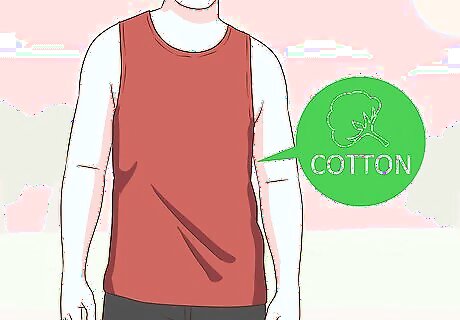
Wear cotton clothing when it’s hot out. Your clothing can trap heat, sweat and oils against your skin, contributing to the development of cysts. If you work out or spend a lot of time outdoors in hot weather, opt for loose, breathable cotton garments. Avoid skin-tight garments and synthetic materials, such as Lycra or nylon.
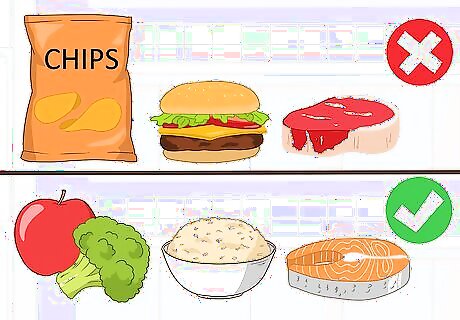
Eat a nutritious diet low in unhealthy fats. Eating certain types of foods, especially greasy and processed junk foods, may contribute to the development of cysts. Fatty meats and chocolate can also cause problems for some people. If you’re prone to cysts, avoid junk food and stick to a healthy, varied diet with lots of leafy greens, colorful fruits and vegetables, whole grains, and lean proteins (such as fish or chicken breast). Zinc may help prevent cysts and acne. Good sources of dietary zinc include oysters, poultry, beans, nuts, shellfish, whole grains, and fortified cereals.
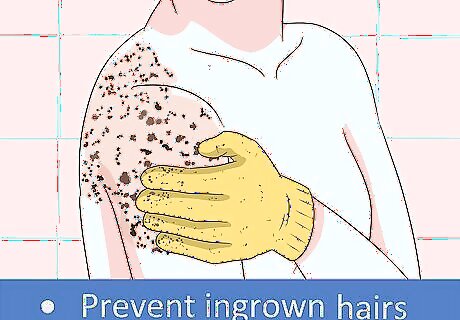
Take measures to prevent ingrown hairs. Infections in ingrown hair follicles often develop into cysts. While ingrown hairs are not always preventable, you can minimize them by exfoliating your skin regularly (e.g., once a week) and moisturizing your skin daily with a gentle, oil-free moisturizer. If you shave your hair, always wet your skin first. Shave with a clean, sharp blade and use shaving cream or gel to minimize nicks and scrapes. Cleansing your skin regularly with glycolic or salicylic acid cleansing pads may also help prevent ingrown hairs and infected follicles.




















Comments
0 comment